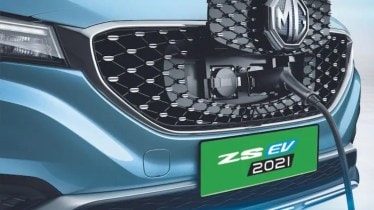Come 2030 and it will be a common scene to see people travelling across the country in ‘silent vehicles.’ These vehicles which run on electric motors are not only clean in terms of air pollution but also make less noise. Thus, curbing noise pollution too. Governments across the globe are working hard for EV30@30 campaign which implies – having 30% of new vehicle sales as electric vehicles owing to benefits like above. As a responsible nation, India too is committed to EV30@30.
But with just 9 years remaining and given the bureaucratic hurdles, some question that is it achievable? Experts say that it is indeed achievable, but the key to the transformation lies in overcoming infrastructure hurdles in the rural and semi-urban areas.
The success of the mission in the rural areas depends on two factors- electricity supply and availability of public charging stations. A robust and accessible network of EV charging infrastructure can drive the required push to achieve this target.
Electricity supply
According to the report ‘State of Electricity Access in India’ October 2020 by the Council on Energy, Environment and Water (CEEW) , electrification in urban areas is 99%, while it is closely lagging behind at close to 96% for the rural areas. While a majority of the states have achieved 100% electrification, other states are following them closely. Moreover, rural India on an average gets electricity supply of 18-20 hrs. Thus, there appears to be good progress made on this front.
The charging infrastructure
While the fuel (electricity) is readily available in rural areas too, storing it in the battery packs of the vehicles is the biggest challenge. In its master document, Niti Aayog has classified EV charging infrastructure – as public, semi-public and private. While this goes well for urban India, where semi-private space includes gated colonies or flats, in rural areas, there can be only two – public and private charging ports.
Rural areas also pose some other challenges that are somewhat not present in the urban locations. These include-
· Geographical limitations– Due to the expanse of the rural areas, it is nearly impossible to have public charging stations as present in between the villages and towns. Issues like electricity supply, payment and collections, care and maintenance and safety and security of the charging ports is uncertain. Even today, petrol pumps are selectively located at few places close to prominent towns and villages.
· Demographic factors– Since the electric vehicles are intelligent vehicles and they have software systems to run it and optimize battery operations, some amount of digital literacy is required for their functioning. There may be a challenge on this front, as the rural population’s digital education is less as compared to urban population.
· Financial factors– In India, electricity is billed at differential rates for agricultural purposes in rural areas and for residential and industrial purposes in urban locations. Hence, pricing of electricity for charging the vehicle at public charging stations remains a challenge, as rural residents would prefer to charge their vehicles from agricultural lines, which is cheaper rather than from a public charger which would be at a higher price.
· Low vehicle density– Rural areas are mostly dominated by scooters/motorcycles, tractors, trucks and tempos when compared with cars and autorickshaws. Converting those vehicles into electric is long drawn process.
PPP – The mid-way
As EV adoption is increasing, there are companies who are looking to invest in changing infrastructure in urban locations which is financially viable, but in case of rural and semi-urban locations, the situation is completely reversed. Due to the limitations listed above, companies may not be willing to invest.
In this scenario, the Public-Private-Partnership model seems a viable option where government engages and encourages private players to supply charging infrastructure and install public charging infrastructure in the rural and semi urban locations and also compensates it for any shortfall in the revenues for a certain tenure.
Further, in related context, a report by India Ratings and Research earlier this year said that public-private partnership model for operating electric vehicles, especially buses, will help state transport undertakings deploy more such zero-emission vehicles in the coming years. Measures like these to enhance the presence of more electric vehicles on the road will also push to enhance the EV infrastructure on the roads of rural and semi-urban locations.
Going forward
The transition from cycles to motorcycles and cars was not easy and the government had to push to create a network of petrol pumps across the length and breadth of the country. Now, as electricity is readily available and running cost per km is significantly lower than ICE vehicles, it is just a matter of time that we see more acceptance for EVs. But to achieve the EV30@30 target the government will have to take private players together and help them create a seamless charging infrastructure on the roads leading to villages of India.
Disclaimer: The views and opinions expressed in this article are solely those of the original author. These views and opinions do not represent those of The Indian Express Group or its employees.
